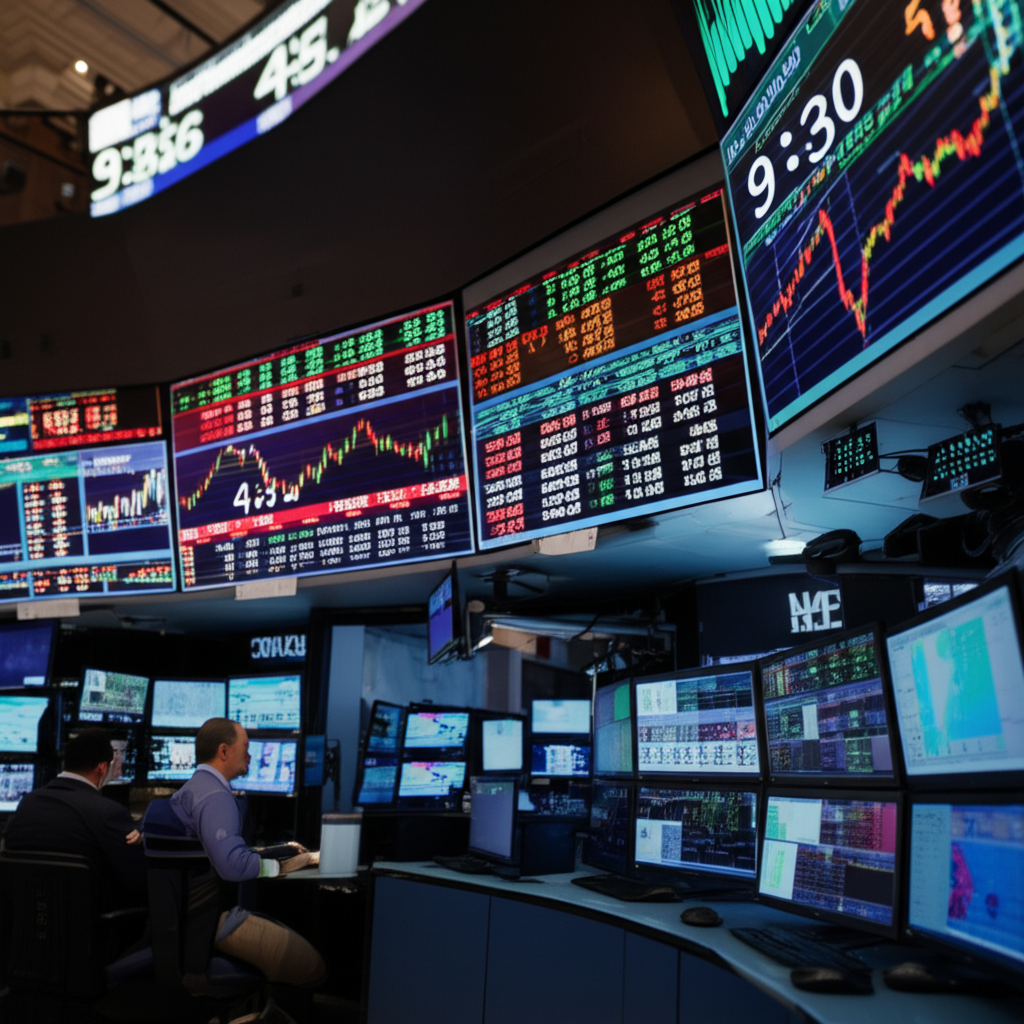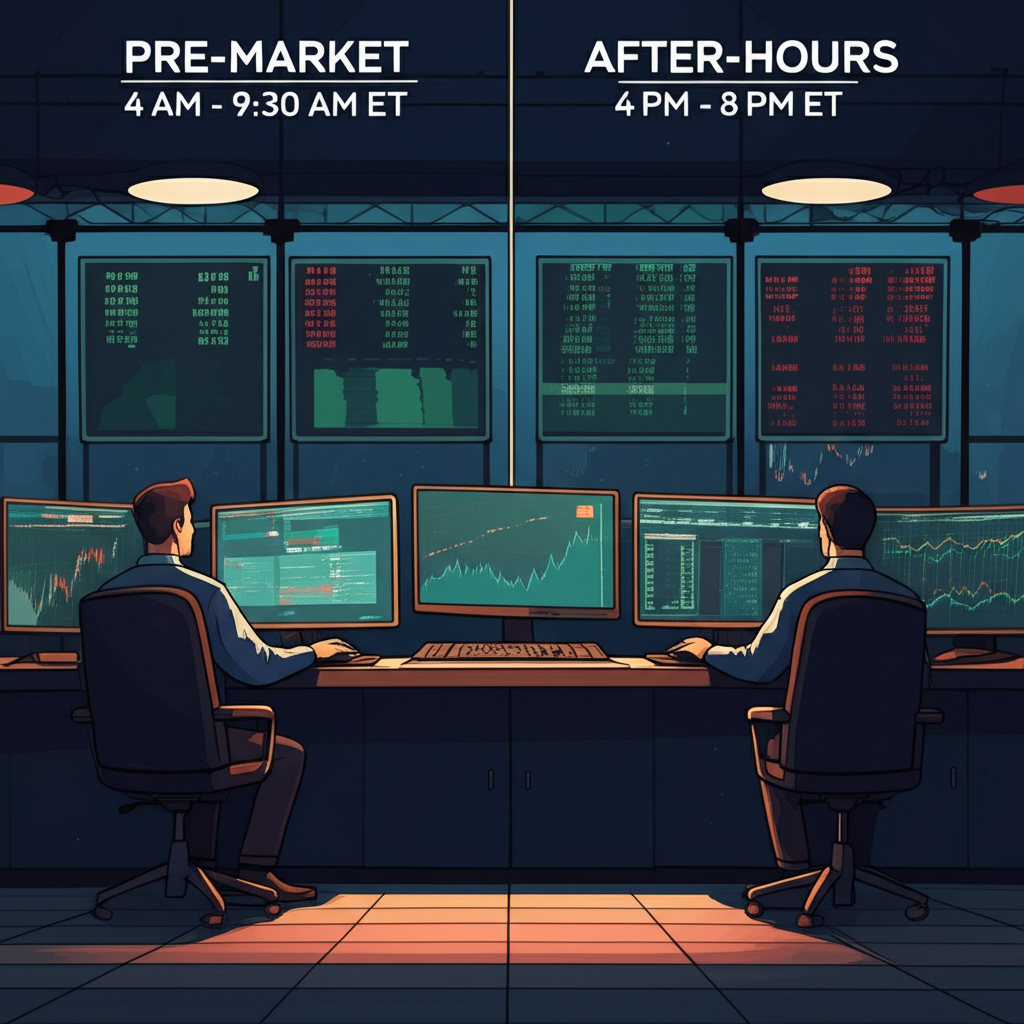Introduction to US30 Trading Hours

The US30, widely known as the Dow Jones Industrial Average (DJIA), stands as one of the most influential benchmarks in global finance. It reflects the performance of 30 major U.S. blue-chip companies and serves as a barometer for the overall health of the American economy. For traders and investors, understanding when the US30 is actively trading goes beyond simply knowing the stock market’s clock. The reality is more layered—different instruments tied to the index operate on distinct schedules. Whether you’re investing directly in component stocks, trading ETFs that mirror the index, or using derivatives like futures and Contracts for Difference (CFDs), each comes with its own trading window. These variations stem from differences in market structure, regulation, and global accessibility. This guide breaks down the full spectrum of US30 trading times, covering regular market sessions, extended hours, holiday closures, and the near-continuous availability of futures and CFDs—equipping you with the clarity needed to navigate this complex landscape.
Standard US Stock Market Hours (NYSE & NASDAQ)

For those investing in individual Dow component stocks or US30-tracking ETFs, the rhythm of trading is set by the major U.S. exchanges—primarily the New York Stock Exchange (NYSE) and NASDAQ. These platforms define the core trading day for equities and equity-linked products in the United States.
Official Opening and Closing Times
The standard trading session runs from **9:30 AM to 4:00 PM Eastern Time (ET)**, Monday through Friday. This 6.5-hour window is the heartbeat of U.S. equity markets. It’s during this period that the majority of price discovery occurs, and volume peaks across the Dow’s constituent stocks and related ETFs. While electronic activity surrounds this window, the official open at 9:30 AM ET marks the start of the formal auction process. All times referenced in U.S. financial reporting are based on Eastern Time, reflecting New York’s role as the center of American finance. Traders outside this time zone must adjust accordingly—misjudging the clock by even an hour can mean missing critical market moves. For the most accurate and up-to-date information, the NYSE website offers an official calendar of market hours and special trading days.
Why These Hours Matter for US30-Related Investments
The 9:30 AM to 4:00 PM ET session is where the market operates at its most efficient. Liquidity is deepest, order books are thickest, and bid-ask spreads are typically tightest. This environment favors both retail and institutional traders, allowing for smoother execution and more reliable pricing. Key economic reports—such as non-farm payrolls, CPI data, and Federal Reserve announcements—are often released just before or during this window, triggering significant volatility. Corporate earnings from Dow components like Apple, Goldman Sachs, or Boeing also tend to drop during or just after market hours, with their full impact often realized the following trading day. The opening and closing auctions, occurring at 9:30 AM and 4:00 PM ET, are particularly dynamic. Orders accumulated overnight or held back until day’s end converge, sometimes leading to sharp price movements. For long-term investors, these hours represent the primary window for portfolio adjustments; for active traders, they offer the richest opportunities for intraday strategies.
Extended Hours Trading: Pre-Market and After-Hours Sessions

Beyond the traditional trading day, investors can access the market during pre-market and after-hours sessions. These extended windows cater to those who need to act on news that doesn’t align with regular market hours.
What is Pre-Market Trading?
Pre-market trading begins as early as **4:00 AM ET** and lasts until the official open at 9:30 AM. This session allows participants to react to overnight developments—such as earnings from international companies, geopolitical shifts, or macroeconomic data from Europe and Asia. U.S.-based earnings releases often drop before the market opens, making pre-market a critical time for price adjustment. However, trading during this period is not without its challenges. Participation is limited compared to regular hours, leading to thinner order books. As a result, even modest-sized trades can cause outsized price swings. Not all brokers offer pre-market access, and those that do may restrict order types to limit orders only, reducing the risk of unfavorable executions.
Understanding After-Hours Trading
After the closing bell at 4:00 PM ET, trading continues through the after-hours session, which typically runs until **8:00 PM ET**. This period serves a similar purpose: reacting to news that emerges post-close. Many companies choose to release earnings after 4:00 PM, allowing investors time to digest the results without the pressure of real-time trading. High-profile announcements—such as mergers, regulatory decisions, or leadership changes—also tend to surface during this time. Like pre-market, after-hours trading is marked by reduced volume and liquidity. Prices may gap significantly from the closing price, and the cost of trading can increase due to wider spreads. While it offers flexibility, especially for full-time professionals unable to trade during the day, it demands a higher level of caution.
Risks and Opportunities of Extended Hours Trading for US30
Extended hours present a double-edged sword for traders focused on US30 assets.
**Opportunities:**
* **Timely Reactions:** The ability to trade immediately after earnings or major news can provide a strategic advantage, especially when sentiment shifts rapidly.
* **Global Alignment:** For international traders, pre-market and after-hours sessions offer better alignment with their local business hours.
* **Early Sentiment Indicators:** Price action in extended hours can signal the tone of the next regular session, helping traders position ahead of the open.
**Risks:**
* **Low Liquidity:** With fewer participants, executing large orders can move the market, leading to slippage.
* **Volatility Spikes:** Thin order books make prices more susceptible to sharp, unpredictable swings.
* **Price Gaps:** A stock might trade at one level in after-hours but open at a significantly different price the next morning due to overnight news or futures movement.
* **Limited Tools:** Advanced order types like stop-limit or trailing stops may not be available, limiting risk management options.
US Stock Market Holiday Schedule
The U.S. equity market follows a fixed holiday calendar, closing entirely on specific days each year. These closures affect all stocks and ETFs tied to the US30.
Major Market Closures for 2024/2025 (Example Year)
The following table outlines the primary full-day market holidays observed by the NYSE and NASDAQ. While dates can shift slightly—such as when a holiday falls on a weekend—these are the standard observances. Early closures, though less frequent, can occur on days like the Friday after Thanksgiving or the day before Independence Day.
| Holiday | Typical Date (Example) |
| :———————— | :——————— |
| New Year’s Day | January 1 |
| Martin Luther King, Jr. Day | Third Monday in January |
| Presidents’ Day | Third Monday in February |
| Good Friday | Varies (March/April) |
| Memorial Day | Last Monday in May |
| Juneteenth National Ind. Day | June 19 |
| Independence Day | July 4 |
| Labor Day | First Monday in September |
| Thanksgiving Day | Fourth Thursday in November |
| Christmas Day | December 25 |
Impact of Holidays on Trading US30
On market holidays, all trading in US30 stocks and ETFs ceases. There are no price updates, no order executions, and no liquidity. This pause can create uncertainty, especially if major global events unfold during the closure. When the market reopens, prices may gap up or down to reflect overnight developments. Even the days leading up to and following a holiday can be atypical. Trading volume often dips as participants take time off, leading to lighter liquidity and potentially erratic price action. Traders should plan positions accordingly—either closing exposures before a long weekend or adjusting risk parameters for the post-holiday session. While the stock market sleeps, the world doesn’t stop, and derivatives like futures often continue to trade, offering clues about reopening sentiment.
Trading US30 Beyond Stock Market Hours: Futures & CFDs
For those seeking exposure to the US30 outside traditional equity hours, futures and CFDs offer a compelling alternative. These instruments operate on schedules designed for global participation and continuous price discovery.
US30 Futures Trading Hours (E-mini Dow)
Futures contracts tied to the Dow Jones Industrial Average, such as the E-mini Dow (ticker: YM), trade on the CME Globex platform and follow a near-24-hour cycle. Unlike stocks, which are tied to exchange operating hours, futures serve a global client base and must accommodate international time zones. The typical trading schedule is:
* **Sunday:** 6:00 PM ET
* **Monday – Thursday:** 6:00 PM ET to 4:15 PM ET the next day
* **Daily Break:** A short pause from 4:15 PM to 4:30 PM ET, followed by a brief resumption until 5:00 PM ET, then a longer break until 6:00 PM ET
* **Friday:** Trading ends at 4:15 PM ET
This structure allows traders to react instantly to economic releases from Asia or Europe, central bank decisions, or breaking geopolitical news. The E-mini Dow is one of the most liquid futures contracts in the world, making it a preferred tool for day traders, hedge funds, and algorithmic systems. For the most precise timing and any temporary adjustments, the CME Group website provides real-time updates.
US30 CFD Trading Hours
Contracts for Difference (CFDs) on the US30 are offered by online brokers and generally mirror the futures market’s schedule. Most brokers allow trading from Sunday evening to Friday afternoon ET, with only brief daily interruptions. Because CFDs are over-the-counter (OTC) instruments, their availability depends on the broker’s infrastructure and liquidity providers. Some platforms may close earlier on Fridays or open later on Sundays. Additionally, CFDs involve leverage and overnight financing costs, which accumulate during extended holding periods. Traders should review their broker’s specific terms, including rollover times and weekend fees, to avoid unexpected charges.
Why the Difference? Understanding Market Structures
The gap in trading hours between stocks and derivatives stems from fundamental differences in market design.
* **Stock Markets (NYSE/NASDAQ):** These are centralized exchanges with regulatory oversight, operating within defined hours. They prioritize orderly trading and investor protection, which limits session length.
* **Futures Markets (CME):** Built on electronic platforms, futures markets emphasize global access and continuous pricing. The contracts are standardized and cash-settled, enabling seamless trading across time zones.
* **CFD Brokers:** As private counterparties, CFD providers can extend hours by hedging their exposure through futures or other derivatives. Their flexibility comes with counterparty risk, but it also enables round-the-clock access.
Practical Tips for Trading US30 Across Different Time Zones
For traders outside the U.S., navigating US30 hours requires discipline and preparation.
1. **Confirm with Your Broker:** Not all platforms offer identical access. Some may restrict CFD trading or limit extended-hours stock access. Always verify the exact schedule on your trading interface.
2. **Convert to Local Time:** Eastern Time is the standard, but traders in London, Tokyo, or Sydney must convert accordingly. Use a reliable world clock tool to avoid confusion.
3. **Watch for Daylight Saving Changes:** The U.S. shifts clocks in March and November, altering the UTC offset. A 9:30 AM ET open might be 2:30 PM UTC in winter but 1:30 PM UTC in summer. Failing to adjust can lead to missed entries or exits.
4. **Monitor Holiday Calendars:** Keep a bookmark to official exchange sites, such as the NASDAQ holiday page, to stay ahead of closures that could affect your strategy.
Conclusion: Navigating the Complexities of US30 Trading Hours
Mastering the US30 isn’t just about analyzing charts or economic trends—it’s also about understanding when the market is open, who’s trading, and how liquidity shifts across time. While stocks and ETFs follow the structured 9:30 AM to 4:00 PM ET framework, with limited pre- and post-market access, futures and CFDs open the door to near-continuous participation. Each trading window comes with its own rhythm: regular hours offer stability and volume, extended sessions provide flexibility at the cost of liquidity, and derivatives enable global, real-time engagement. Awareness of holidays, time zone conversions, and daylight saving adjustments is not optional—it’s essential for risk management. By aligning your strategy with the right instrument and timing, you can trade the US30 with greater precision, confidence, and control.
What are the standard trading hours for the US stock market, which impacts US30-related stocks and ETFs?
The standard trading hours for the major US stock exchanges (NYSE and NASDAQ) are from 9:30 AM to 4:00 PM Eastern Time (ET), Monday through Friday. This applies to most individual stocks within the Dow Jones Industrial Average and ETFs that track the US30.
How do pre-market and after-hours trading sessions for US30-linked instruments work?
Pre-market trading typically runs from 4:00 AM to 9:30 AM ET, while after-hours trading is usually from 4:00 PM to 8:00 PM ET. These extended sessions allow traders to react to news outside regular hours but are characterized by lower liquidity, wider spreads, and increased volatility.
What is the typical trading schedule for US30 futures contracts (E-mini Dow)?
US30 futures contracts, such as the E-mini Dow (YM), trade almost 24 hours a day, five days a week. The schedule generally runs from Sunday 6:00 PM ET through Friday 4:15 PM ET, with a daily trading halt from 4:15 PM to 4:30 PM ET.
Are US stock markets open on public holidays, and how does this affect US30 trading?
No, US stock markets observe several public holidays throughout the year (e.g., New Year’s Day, Memorial Day, Christmas Day) and are closed on these days. This means trading in US30-linked stocks and ETFs halts completely. Futures and CFDs may have modified hours or may also close on some major holidays; always check their specific schedules.
What are the main differences in trading hours between US30 stocks/ETFs and US30 CFDs?
US30 stocks and ETFs primarily trade during standard US stock market hours (9:30 AM – 4:00 PM ET) with limited extended sessions. In contrast, US30 CFDs typically offer near 24/5 trading, closely mirroring the extensive hours of the underlying US30 futures market, making them accessible outside traditional stock market times.
Can I trade US30 during the weekend?
Generally, no. The US stock markets are closed on weekends. While US30 futures and CFDs offer near 24/5 trading, they typically close on Friday afternoon (ET) and resume on Sunday evening (ET), meaning there is no trading activity for these instruments during most of Saturday and Sunday.
What are the primary risks associated with trading US30 during extended market hours?
The primary risks include lower liquidity, which can lead to wider bid-ask spreads and difficulty executing trades at desired prices. There is also increased volatility, meaning prices can swing more dramatically with less volume, and potential price discrepancies between extended and regular market sessions.
Which time zone are US30 trading hours usually quoted in, and why is this important?
US30 trading hours are almost always quoted in Eastern Time (ET), as this is the standard time zone for the major US financial markets in New York City. It is important for traders to convert these times to their local time zone to accurately plan their trading activities and avoid confusion or missed opportunities.
How do global economic events impact US30 trading outside of standard US market hours?
Global economic events (e.g., Asian market opens, European economic data releases, geopolitical news) can significantly impact US30 futures and CFD prices outside of standard US stock market hours. Because these derivatives trade almost 24/5, they provide a continuous mechanism for price discovery and reaction to international news, which can then influence the US market open.
Where can I find the official US stock market holiday schedule for the current year?
You can find the official US stock market holiday schedule on the websites of the major exchanges, such as the NASDAQ Stock Market Holidays page or the NYSE website. These sources provide the most accurate and up-to-date information on market closures and early closings.

留言